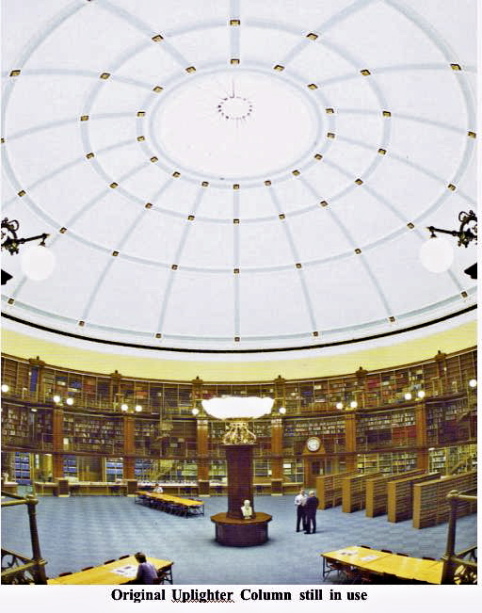
The Picton Reading Room
Cornelius Sherlock
1879
Liverpool
Image and commentary from Neil Sturrock
[You may use this image without prior permission for any scholarly or educational purpose as long as you (1) credit the photographer and (2) link your document to this URL.]
To some extent the circular Reading Room (30m in diameter) would appear to be a three-quarter scale replica of the Reading Room at the British Museum built in the 1850s. However, the Picton Reading Room has what was originally a theatre immediately below it whereas the space below the Reading Room at the British Museum is an elaborate thermal labrynth and plenum chamber. In order to keep the theatre column-free the Reading Room floor is supported by an ingenious structural system involving eight major radial curved beams and eight minor ones. An octagonal key at the centre holds all of these in place. The theatre tiers were hewn from the solid sandstone on which the building rests and, although this has now become the International Library, the flat, lowest level can still be used for lectures and informal talks.
Lighting
The most important aspect of the Picton Reading Room from the point of view of Building Services Engineering was the lighting. The Reading Room was lit by three carbon-arc lamps operating as uplighters and housed in a twelve-segmented glazed dish mounted on an octagonal wooden support at the centre of the room, which is still very much in evidence. This was the first public building in Liverpool to have electric lighting and, almost certainly, the first Library in the country to be lit with electricity. It is interesting to note that a gas supply was also laid on to the Reading Room in case the Electric Lighting proved to be unreliable or inadequate.
References
Liverpool Record Office.
Last modified 10 June 2009